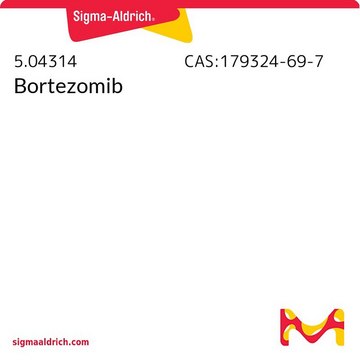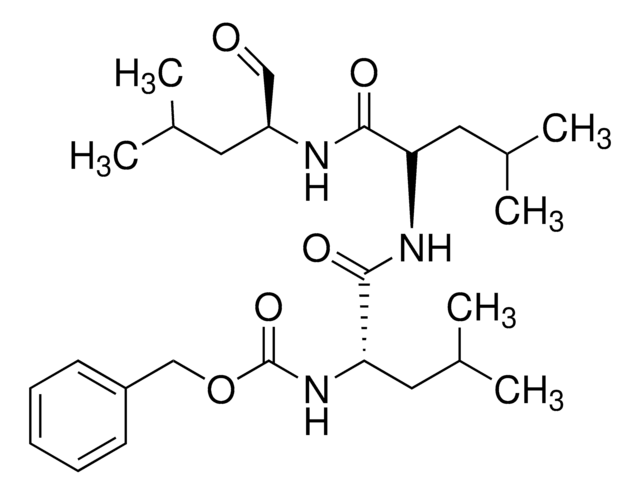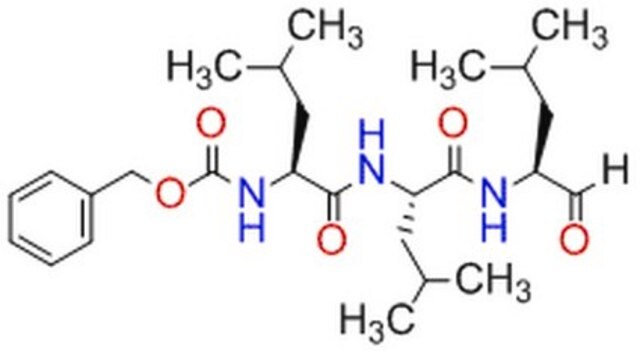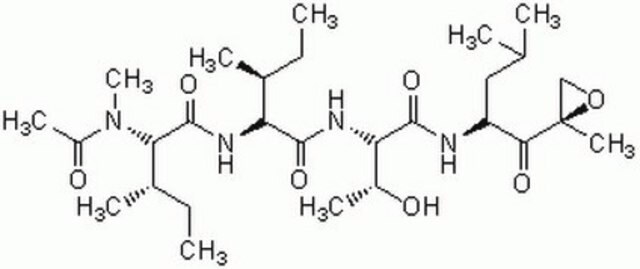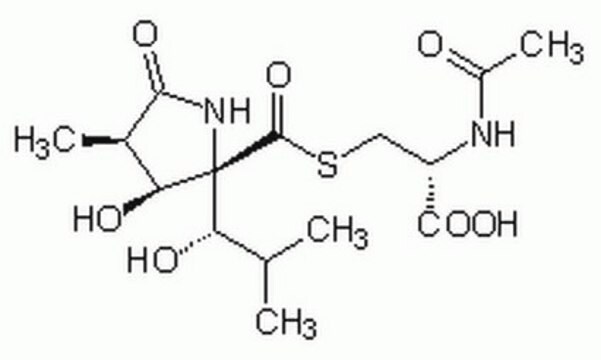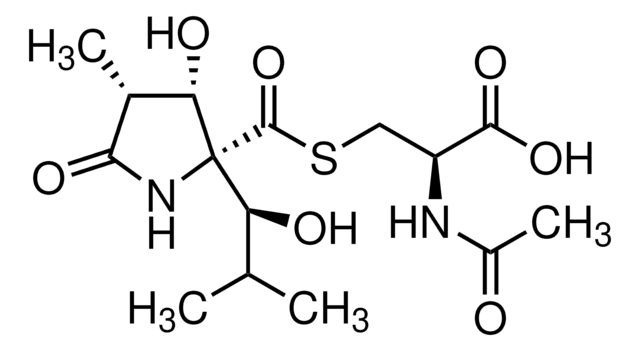474791
Z-Leu-Leu-Leu-al
InSolution, ≥98%, 10 mM, reversible proteasome inhibitor
Synonyme(s) :
MG-132
About This Item
Produits recommandés
Niveau de qualité
Essai
≥98% (HPLC)
Forme
liquid
Fabricant/nom de marque
Calbiochem®
Conditions de stockage
OK to freeze
protect from light
Conditions d'expédition
wet ice
Température de stockage
−20°C
Chaîne SMILES
[H]C(=O)[C@H](CC(C)C)NC(=O)[C@H](CC(C)C)NC(=O)[C@H](CC(C)C)NC(=O)OCc1ccccc1
InChI
1S/C26H41N3O5/c1-17(2)12-21(15-30)27-24(31)22(13-18(3)4)28-25(32)23(14-19(5)6)29-26(33)34-16-20-10-8-7-9-11-20/h7-11,15,17-19,21-23H,12-14,16H2,1-6H3,(H,27,31)(H,28,32)(H,29,33)/t21-,22-,23-/m0/s1
Clé InChI
TZYWCYJVHRLUCT-VABKMULXSA-N
Vous recherchez des produits similaires ? Visite Guide de comparaison des produits
Amino Acid Sequence
Description générale
Actions biochimiques/physiologiques
Conditionnement
Avertissement
Forme physique
Autres remarques
Adams, J., and Stein, R. 1996. Ann. Rep. Med. Chem.31, 279.
Lee, D.H., and Goldberg, A.L. 1996. J. Biol. Chem.271, 27280.
Wiertz, E.J.H.J., et al. 1996. Cell84, 769.
Read, M.A., et al. 1995. Immunity2, 493.
Rock, K.L., et al. 1994. Cell78, 761.
Informations légales
Code de la classe de stockage
10 - Combustible liquids
Classe de danger pour l'eau (WGK)
WGK 2
Point d'éclair (°F)
188.6 °F - closed cup - (Dimethylsulfoxide)
Point d'éclair (°C)
87 °C - closed cup - (Dimethylsulfoxide)
Certificats d'analyse (COA)
Recherchez un Certificats d'analyse (COA) en saisissant le numéro de lot du produit. Les numéros de lot figurent sur l'étiquette du produit après les mots "Lot" ou "Batch".
Déjà en possession de ce produit ?
Retrouvez la documentation relative aux produits que vous avez récemment achetés dans la Bibliothèque de documents.
Les clients ont également consulté
Notre équipe de scientifiques dispose d'une expérience dans tous les secteurs de la recherche, notamment en sciences de la vie, science des matériaux, synthèse chimique, chromatographie, analyse et dans de nombreux autres domaines..
Contacter notre Service technique

